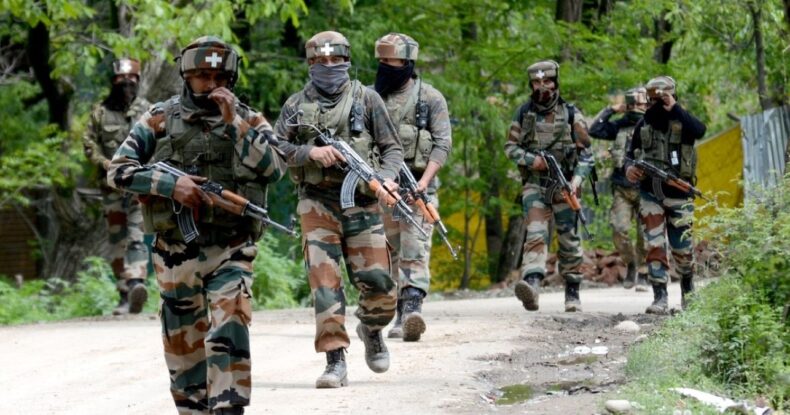Police reports on Thursday confirmed the deaths of two LeT terrorists (Lashkar-e-Taiba) in the Baramulla District of Jammu and Kashmir. The clash occurred on Thursday morning in the Wanigam Payeen Kreeri area of Baramulla after security forces launched a search and cordon operation based on specific intelligence about the presence of hostile militants.
One AK-47 rifle and one pistol, along with other potentially incriminating items, arms, and ammunition, were found by the police.
Lashkar-e-Taiba: A Summary of Terrorism
The terrorist organization Lashkar-e-Taiba (LeT) was founded in 1987 when Pakistan was in the midst of an Islamic uprising. However, it was only after its spectacular coordinated bombing and shooting attacks in Mumbai, India, in November 2008 that the world started to pay attention to the group. LeT by then had access to a consistent stream of volunteers, money, and—most importantly—concealed state support. This Wahhabi organization, which has been supported for a long time by Pakistan’s Inter-Services Intelligence Directorate, uses tableegh and jihad—preaching and armed conflict—to advance the idea of a global Islamic caliphate. LeT’s main operational areas have been in India and Kashmir, but the organization has an unsettling presence everywhere.

A global perspective, international aspirations, and a distinct ideology justifying cooperation with other terrorist organizations keep this group focused on its goals and operations. Additionally, the organization’s devotion to Pakistan and willingness to defend it from domestic adversaries, as well as its use of a diverse network for resource mobilization, promotion of its global presence, and member recruitment, all reduce its reliance on the government. State-run police forces are kept at bay by concurrent involvement in terrorism and social development, which restricts Pakistan’s ability to target the group even if it were inclined to do so.

LeT is the second-most feared terrorist organization after al-Qaeda because of its cohesive and hierarchical organizational structure, effectiveness at carrying out both violent acts and delivering social programs, and proficiency at taking advantage of advancements in science and technology, international social ties, and state vulnerabilities in order to further its political goal.
With a truly global reach and the capacity to establish roots and maintain operations in nations far from its primary theater of operations in South Asia, it is a powerful and highly adaptable adversary to international peace.
The encounter in Baramulla
A gunfight erupted in the early hours of the morning in the Pattan village of Wanigam Payeen, according to a police spokesman. This was the result of security and law enforcement agencies conducting a search operation there based on specific inputs about the presence of militants in the area. The militants fired upon a search party of the forces, who returned fire, turning the search operation into an encounter.

The terrorists were identified as Shakir Majid Najar and Hanan Ahmad Seh from the Shopian district, who were dressed in the authorized Lashkar-e-Taiba terror uniform.
Wednesday witnessed another encounter between the militant forces and the security forces stationed in Jammu and Kashmir’s Kupwara district. It culminated in the death of two terrorists.
A protocol of infiltration and vigilance
The security personnel launched an operation based on information provided by Senior Superintendent of Police (SSP) Kupwara, who warned that one of the terrorist launch pads is probably infiltrating from across the Line of Control (LOC) towards Machhal sector, according to the Defense Public Relations Officer (PRO) Srinagar. According to a statement from the PRO, the troops were appropriately placed on high alert on May 1.

In an extremely challenging terrain, a carefully planned counter-infiltration grid was set up. Along the potential infiltration routes, the Indian Army and Special Operations Group (SOG) Kupwara were also stationed. The statement also noted that the alert troops engaged in ambushes, braving continuous bad weather with an unrelenting downpour, poor visibility, and a significant drop in temperature for two consecutive nights.
The infiltrated terrorists were discovered by the troops on Wednesday morning at about 8:30 a.m. Two terrorists were put to rest as a result of the ensuing firefight.













